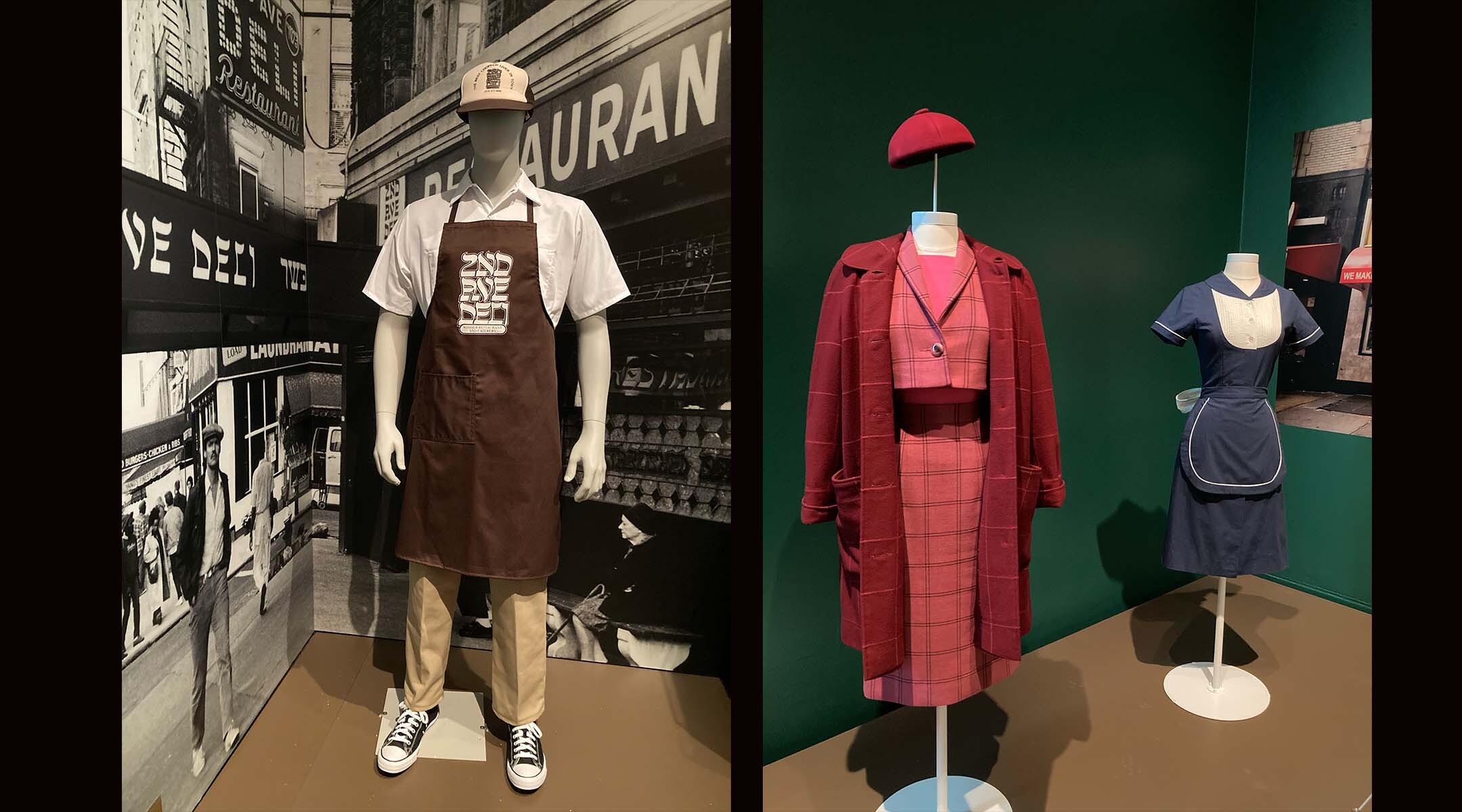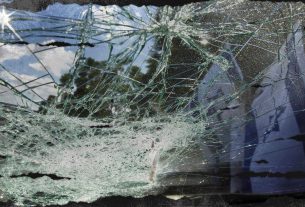(New York Jewish Week) — It was a stupendously bad idea to arrive at the press preview for the New-York Historical Society’s new exhibit, “‘I’ll Have What She’s Having’: The Jewish Deli,” on an empty stomach.
The exhibit — which originated at the Skirball Center in Los Angeles and opens in New York on Friday, Nov. 11 — traces the mouthwatering history of the Jewish deli, beginning with the first waves of Ashkenazi Jewish immigrants in the late 19th and early 20th centuries. These new Americans created a “fusion food born of immigration,” according to the exhibit, adapting Eastern and Central European dishes like pastrami and knishes to meet Jewish dietary needs and serving them all under the same roof.
From there, the exhibit examines how delis evolved and, as Jews left cities for the suburbs in the mid-20th century, how they spread from coast to coast. Relying on a mix of archival materials, informative panels, interactive displays and more, “I’ll Have What She’s Having” seems uniquely designed to make visitors crave a pastrami sandwich.
(Alas, while a tray of babka and rugelach were laid out for the opening, there is no actual pastrami available on site.)
It’s also, as Louise Mirrer, the president and CEO of the New-York Historical Society said in her opening remarks, “a trip down memory lane” for any native New Yorker.
Most of all, “I’ll Have What She’s Having” establishes the Jewish delicatessen as a uniquely American phenomenon. Writer Lara Rabinovitch, a curator of the exhibit who has a PhD in history and Jewish studies, said there were “important caveats” before she got involved in its creation. “If we’re going to do this exhibition, it cannot be grounded in nostalgia and kitsch,” she told me. “It has to be grounded in research, in archival research, and it has to take the Jewish deli as a part of the American landscape — not as a Jewish niche object of rarified Jewish pleasure.”
The now-shuttered Carnegie Delicatessen in New York in 2008. (Ei Katsumata/Alamy Stock Photo)
“Because, to me, and I fundamentally believe this, the Jewish deli is a part of American culture,” she added. “And it is something that all Americans take part in, in one way or another, whether it’s through pop culture, or through actually going to the Jewish deli, or working in Jewish deli.”
This Americanness is emphasized throughout the exhibit, which includes an area dedicated to Levy’s iconic “You Don’t Have to Be Jewish to Love Levy’s Real Jewish Rye” ad campaign and explanations of how many delis added a wider array of cuisines to attract more diverse customers. There’s also a focus on the deli in pop culture, which includes costumes from the deli scenes seen on the Amazon Prime hit “The Marvelous Mrs. Maisel.”
Fascinatingly, one thing the exhibit doesn’t do is define what a deli actually is. “We came up with it as a community, a place where people gather to eat Jewish food of one kind or another, but it’s always changing,” Rabinovich said. “I mean, we all know, in certain capacities, what a Jewish deli is. But it’s sort of like pornography — it doesn’t have a definition, but you know it when you see it.”
Case in point: This version of “I’ll Have What She’s Having” has an area dedicated to dairy restaurants — not something that most people would associate with the classic Jewish deli. (For those who keep kosher, delis and dairy restaurants must be kept as separate as the meat- and milk-based dishes that they serve.)
Other New York-centric details include an area dedicated to “Bagels Over Broadway,” examining the relationship between iconic eateries like the Carnegie Deli and Stage Delicatessen — both closed, alas — and the greater theater community. There’s also an area on delis in the outer boroughs, including Ben’s Best Kosher Delicatessen, which was a popular gathering place for Holocaust survivors in Rego Park, Queens.
Among the compelling artifacts on display are a bottle of Dr. Brown’s Cel-Ray soda from 1930s; a meat grinder from the early 20th century for making kishke, salami and the like; and matchbooks from delis of yore.
Support the New York Jewish Week
Our nonprofit newsroom depends on readers like you. Make a donation now to support independent Jewish journalism in New York.
Particularly notable is historical proof that New Yorkers did, in fact, listen to Katz’s Delicatessen’s famous slogan, “Send a Salami to Your Boy in the Army”: On display is a 1944 letter from Italy from Private Benjamin Segan to his fiancée in Manhattan. “I had some tasty Jewish dishes just like home,” he writes, describing how his mother had sent him a, yes, salami.
According to the New-York Historical Society, by the 1930s, there were an estimated 3,000 delis in the city — today, only about a dozen remain. One classic survivor is Katz’s — the setting for the famous “When Harry Met Sally” scene that inspired the title of the exhibit. Third-generation owner Jake Dell told me that “food, tradition-slash-nostalgia, and atmosphere,” are the reasons for his deli’s enduring appeal today.

Among the items on view: a uniform from the 2nd Avenue Deli, left, and costumes from the set of “The Marvelous Mrs. Maisel.” (Lisa Keys)
Because, here in New York, especially, there are numerous options for deli delights, from the old-school classics to newer establishments like Frankel’s in Greenpoint. I remarked to Rabinovitch that there is something slightly incongruous about standing beneath the iconic 2nd Avenue Deli sign inside a museum. Here, its Hebraic letters are viewed as an artifact; meanwhile, while it’s no longer at its original Second Avenue location, we could still go there for lunch.
“You don’t have to go that far,” she pointed out. “You can go across the street to Nathan’s hot dog cart. And that is the Jewish deli, also. It’s literally a part of the American landscape. It’s part of the New York landscape. There is a trope, ‘Oh, the deli is dying, you can’t get a pastrami sandwich anywhere.’ We believe the deli is everywhere. It’s just how you think about it.”
As much as I loved this sentiment, I’m not really a street meat kind of person. It was a sunny, unseasonably warm morning, and I had a terrible urge to blow off the rest of the day, head to Katz’s for a pastrami sandwich and spend the afternoon wandering the Lower East Side.
But I had an article to write. So I hopped on a Citi Bike, headed to midtown, and picked up a bagel that I could hold one-handed as I wrote this story.
“‘I’ll Have What She’s Having’: The Jewish Deli” is on view at the New-York Historical Society, 170 Central Park West, beginning Friday, Nov. 11, 2022 through Sunday, April 2, 2023.




